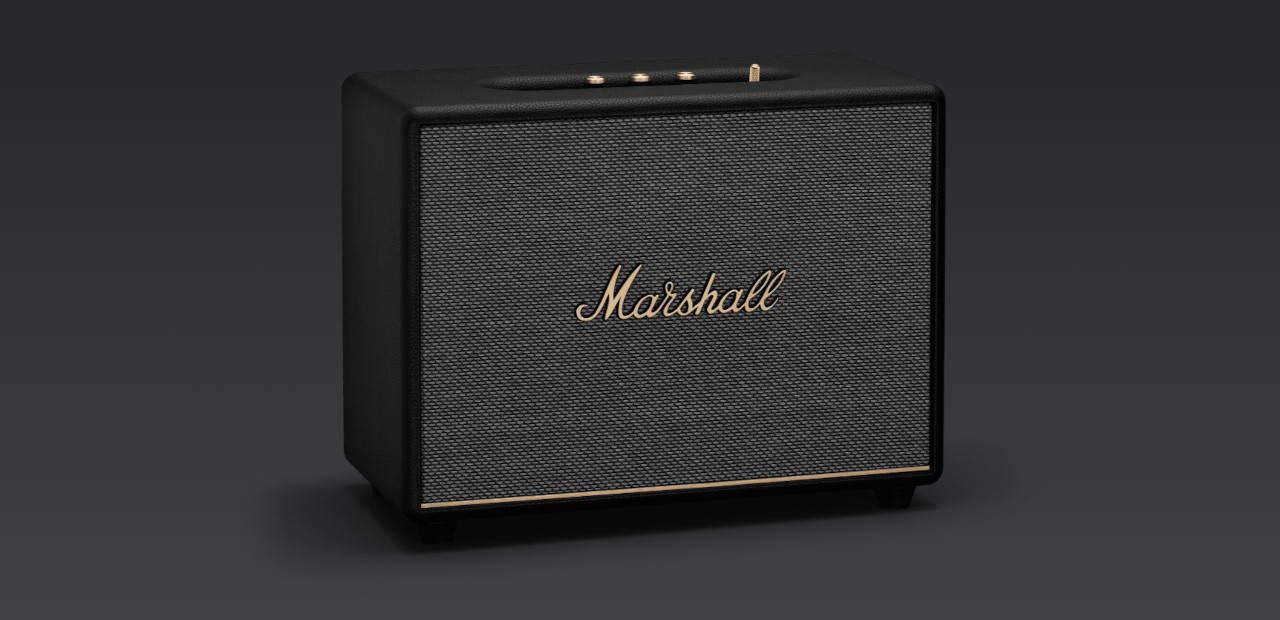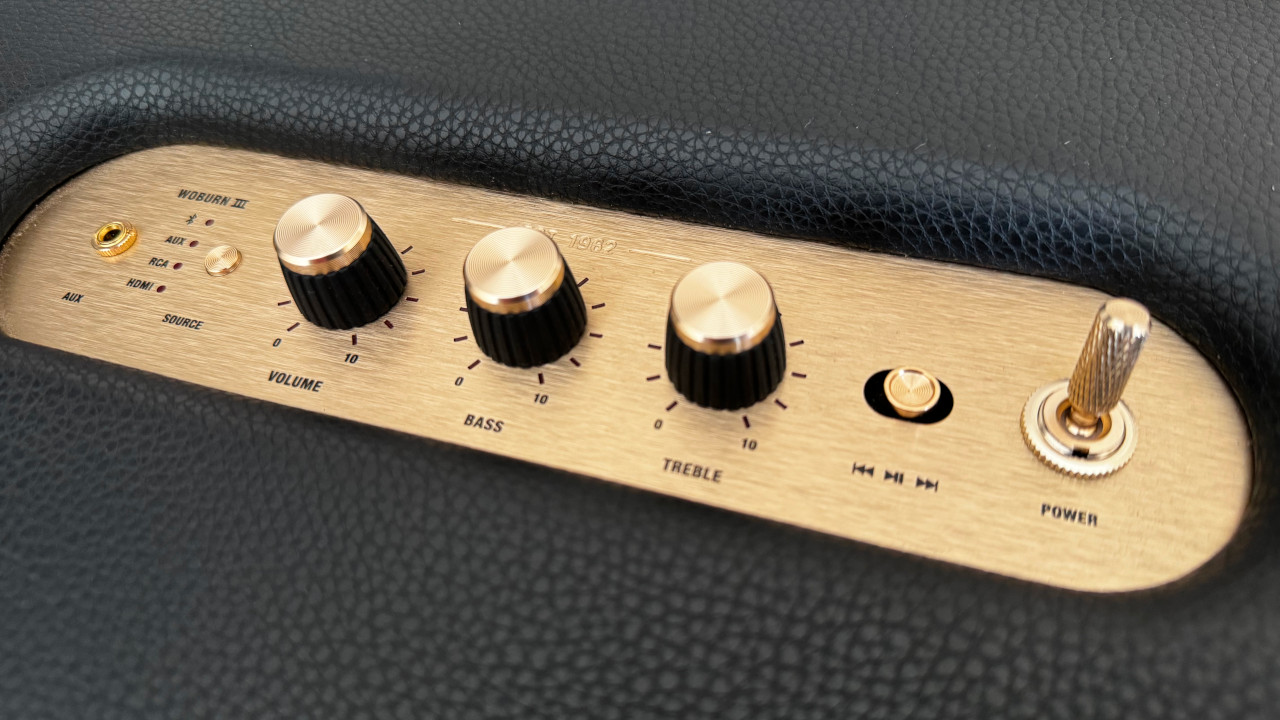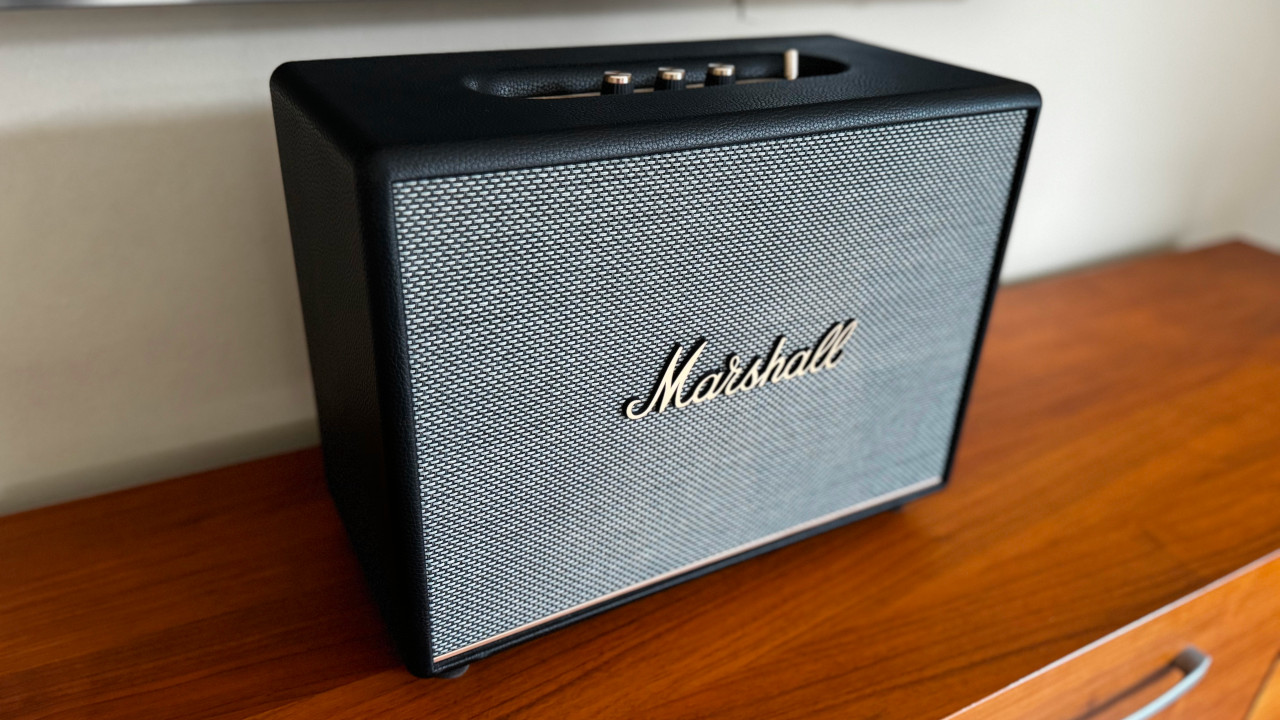
Marshall introduced the Woburn III Bluetooth speaker on to the market in the summer of 2022 - around four years after the Woburn II shook our foundations.
It’s one of three third generation speakers in the latest Marshall line-up along with the Acton III and Stanmore III and is the largest in the range - but just how does it perform and does it do enough to raise it above the crowded Bluetooth speaker market? I’ve put the Marshall Woburn III through its paces to find out, testing it with a number of artists to get the most out of this raucous bit of kit.
Design
The Woburn III is a tabletop speaker designed for indoor use that sports the classic Marshall amp look, complete with that iconic signature in bronze/gold across the black and white front grille. It’s a sizeable bit of hardware at 40cm x 31cm x 20cm and it weighs 9.18 kg - so a smidgen heavier and bigger than the Woburn II.
The outside of the speaker is wrapped in textured vegan, artificial leather - Marshall don’t use real leather in their products - and this green feel is also replicated elsewhere: Plastic parts have been created with recycled materials and the speaker is PVC free.
The control panel sit on top of the speaker and there’s space for an aux port alongside reassuringly tactile volume, bass and treble dials. If the speaker is switched off at the mains, you’ll notice there’s no marker line on the knobs - only when you flick the satisfyingly chunky power switch on will you see that the base of each dial lights up in red to indicate where your level is set to. There’s also room on the top panel for a forward/reverse track slider so you can skip around your tracks physically, rather than just use your phone or tablet.
Features

You could argue that the Marshall Woburn III is light on features, but take a closer look and you’ll find there’s more than enough to keep music fans. Bluetooth has been upgraded from the previous model’s 5.0 to 5.2 LE. There’s also the addition of an HDMI port on the back of the speaker - something missing from the Woburn II, making it ideal for hooking up to your TV - along with an RCA input.
As mentioned, you can flick back and forth between tracks using the slider switch on top of the Woburn III, but it’s more conveniently to do this via the Marshall app - especially if you’re kicking back on the sofa. Here, you can also adjust bass and treble settings.
The Woburn III also features Marshall’s Placement Compensation feature, where you can select whether the speaker is close to an edge or corner; or if it’s close to a wall or free-standing through the app. This results in an adjustment to the speaker’s soundstage to give you the best possible audio experience.
Sound

The most important part of any speaker is, of course, how it performs while cranking out your favourite albums and artists. First up, I need to talk about how loud this stereo speaker can go - and that’s LOUD. Even with the volume set at 4/10, the audio delivery was powerful enough to fill my living room easily. I cranked it as high as I could, but only briefly as I didn’t want angry neighbours battering down my door - not that I would have heard them through the wall of noise the Woburn III delivers. Very, very impressive.
Audio clarity and balance are spot on with the Woburn III, with the speaker easily handling everything I threw at it via Apple Music.
The first album I played was Heart’s Bad Animals from 1987 and Ann Wilson’s voice projected beautifully through the mix, while Nancy Wilson’s chugging guitar on opener Who Will You Run To was punchy and full of life. Her backing vocals also came through on-point. Smash hit single Alone also sounded fantastic, with Denny Carmassi’s drums shaking the room.
Next up on the playlist was Rush’s Clockwork Angels album - an record that truly shines through a good pair of headphones. Happily, the results through the Marshall Woburn III were equally as good. Alex Lifeson’s spine-tingling solo on Halo Effect was sparkling, while the frenetic seven minutes of Headlong Flight almost knocked me on my backside: Crisp, balanced and punchy. Special mention goes again to Lifeson on his solo to the emotional rollercoaster that is closer The Garden. It’s a piece of music that brings out the ol’ goosebumps, and cranking up the volume for that meaty solo sounded simply majestic on the Woburn III.
Drab Majesty’s The Demonstration was next up and with its silky synths, jangly guitars and 80s goth vibes. Again, the Woburn III delivered here too, with the Woburn III's wide soundstage giving Deb and Mona’s 2017’s masterpiece a rich, warm glow.
The alternatives
The Marshall design may not be for everyone, so if you’re looking for an alternative, here are a couple of options. Soundboks (Gen.3) remains at the top of our guide to the loudest Bluetooth speakers. This is a wireless unit with 40 hours of play time from a full charge, so it’s a great option for use outdoors - unlike the Woburn III which is for indoor use only and remains tethered to a power socket.
If you’re in the market for something with a little more portability, then the Louder team think the JBL Boombox 2 is worth a closer look. It’ll give you 24 hours of music from a full charge and although you can take it outside, it looks and performs equally in a living room or bedroom.
Related content
- The best Marshall speakers: Portable speakers to home Hi-Fi
- Best turntable speakers: Take your vinyl listening to the next level
- Best Bluetooth turntables to put a modern spin on your vinyl
- Best outdoor speakers: Sound systems that'll rock the outside world
- The best speakers for your home: Overhaul your sound system







